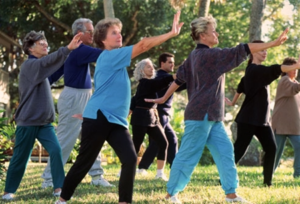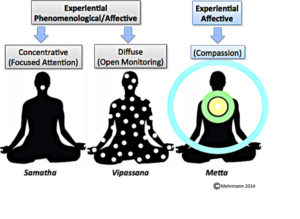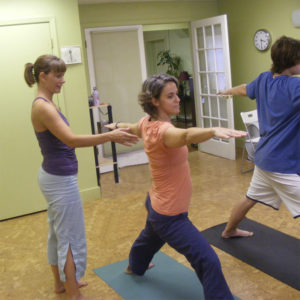Prevent Osteoporosis with Tai Chi Practice
By John M. de Castro, Ph.D.
“There are many ways that tai chi helps people with osteoporosis. An excellent study showed tai chi slowed down the loss of bone density approximately three fold. “ – Paul Lam
Bone is living tissue that, like all living tissues, is constantly being broken down and replaced. Osteoporosis occurs when the creation of new bone doesn’t keep up with the removal of old bone. This results in a loss of bone mass, causing bones to become weak and brittle. It can become so brittle that a fall or even mild stresses like bending over or coughing can cause a fracture. These fractures most commonly occur in the hip, wrist or spine. Osteoporosis is estimated to affect 200 million women worldwide. In the United States 54 million adults over 50 are affected by osteoporosis and low bone mass. Osteoporosis takes a huge personal and economic toll. The disability due to osteoporosis is greater than that caused by cancers and is comparable or greater than that lost to a variety of chronic diseases, such as arthritis, asthma and high blood pressure related heart disease.
The most common treatments for osteoporosis are drugs which slow down the breakdown of bone, combined with exercise. The side effects of the drugs are mild, including upset stomach and heartburn. But, there is a major compliance problem as the drugs must be taken over very long periods of time. In fact, only about a third of patients continue to take their medications for at least a year. Even when drugs are taken, exercise is recommended to improve bone growth. Indeed the mindful movement exercise of yoga has been shown to improve osteoporosis. The ancient mindful movement technique Tai Chi is a very safe form of gentle exercise that should make it potentially beneficial for the prevention and treatment of osteoporosis.
In today’s Research News article “The effect of Chinese martial arts Tai Chi Chuan on prevention of osteoporosis: A systematic review.” (See summary below or view the full text of the study at: https://www.ncbi.nlm.nih.gov/pmc/articles/PMC5866477/), Chow and colleagues review, summarize, and perform a meta-analysis on the 9 published research studies of the effects of Tai Chi practice on mineral bone density. The published studies included a total of 1222 participants. They found that Tai Chi practice produced significant increases in mineral bone density but it required fairly long practice periods, greater than 4 months. There were indications that Tai Chi practice was particularly effective for women. This is encouraging as osteoporosis is much more prevalent in women than in men.
These results are encouraging and suggest that Tai Chi practice may be an effective treatment to prevent the development of osteoporosis. Importantly, Tai Chi is gentle and safe, is appropriate for all ages including the elderly and for individuals with illnesses that limit their activities or range of motion, such as stroke recovery, is inexpensive to administer, can be performed in groups or alone, at home or in a facility, and can be quickly learned. In addition, it can be practiced in social groups. This can make it fun, improving the likelihood of long-term engagement in the practice. So, Tai Chi practice would appear to be an excellent gentle exercise to prevent bone mineral loss and the development of osteoporosis.
So, prevent osteoporosis with Tai Chi practice.
“women who practiced tai chi for 45 minutes per day, five days per week for a year had a rate of bone loss that was 3.5 times slower than those who didn’t. This improvement was reflected in their bone mineral density.” – AlgaeCal
CMCS – Center for Mindfulness and Contemplative Studies
This and other Contemplative Studies posts are also available on Google+ https://plus.google.com/106784388191201299496/posts and on Twitter @MindfulResearch
Study Summary
Chow, T. H., Lee, B. Y., Ang, A. B. F., Cheung, V. Y. K., Ho, M. M. C., & Takemura, S. (2018). The effect of Chinese martial arts Tai Chi Chuan on prevention of osteoporosis: A systematic review. Journal of Orthopaedic Translation, 12, 74–84. http://doi.org/10.1016/j.jot.2017.06.001
Summary
Background/Objective
Tai Chi Chuan (TCC) is suggested to have beneficial effects on the musculoskeletal system. The aim of this systematic review is to evaluate the evidence of the effect of TCC on bone mineral density (BMD) and its potential for prevention of osteoporosis.
Methods
A literature search was conducted using PubMed, Embase, and Cochrane databases from inception to January 2017. Randomized controlled studies, case–control trials, prospective cohort studies, and cross-sectional studies which evaluated the effect of TCC on BMD were selected without any subject or language restriction.
Results
Nine articles met the inclusion criteria, including seven randomized controlled trials (RCTs), one case–control trial (CCT), and one cross-sectional study, encompassing a total of 1222 participants. Five studies showed statistically significant improvements in BMD after TCC, three studies showed nonsignificant intergroup differences, and one study provided no statistical evaluation of results. The studies with nonsignificant results tended to have a shorter total duration of TCC practice. Apart from dual-energy X-ray absorptiometry (DXA), two studies additionally used peripheral quantitative computed tomography (pQCT) which showed statistically significant positive effects of TCC on preventing osteoporosis.
Conclusion
TCC is beneficial to BMD and may be a cost-effective and preventive measure of osteoporosis. This beneficial effect is better observed in long-term TCC practice.
https://www.ncbi.nlm.nih.gov/pmc/articles/PMC5866477/









